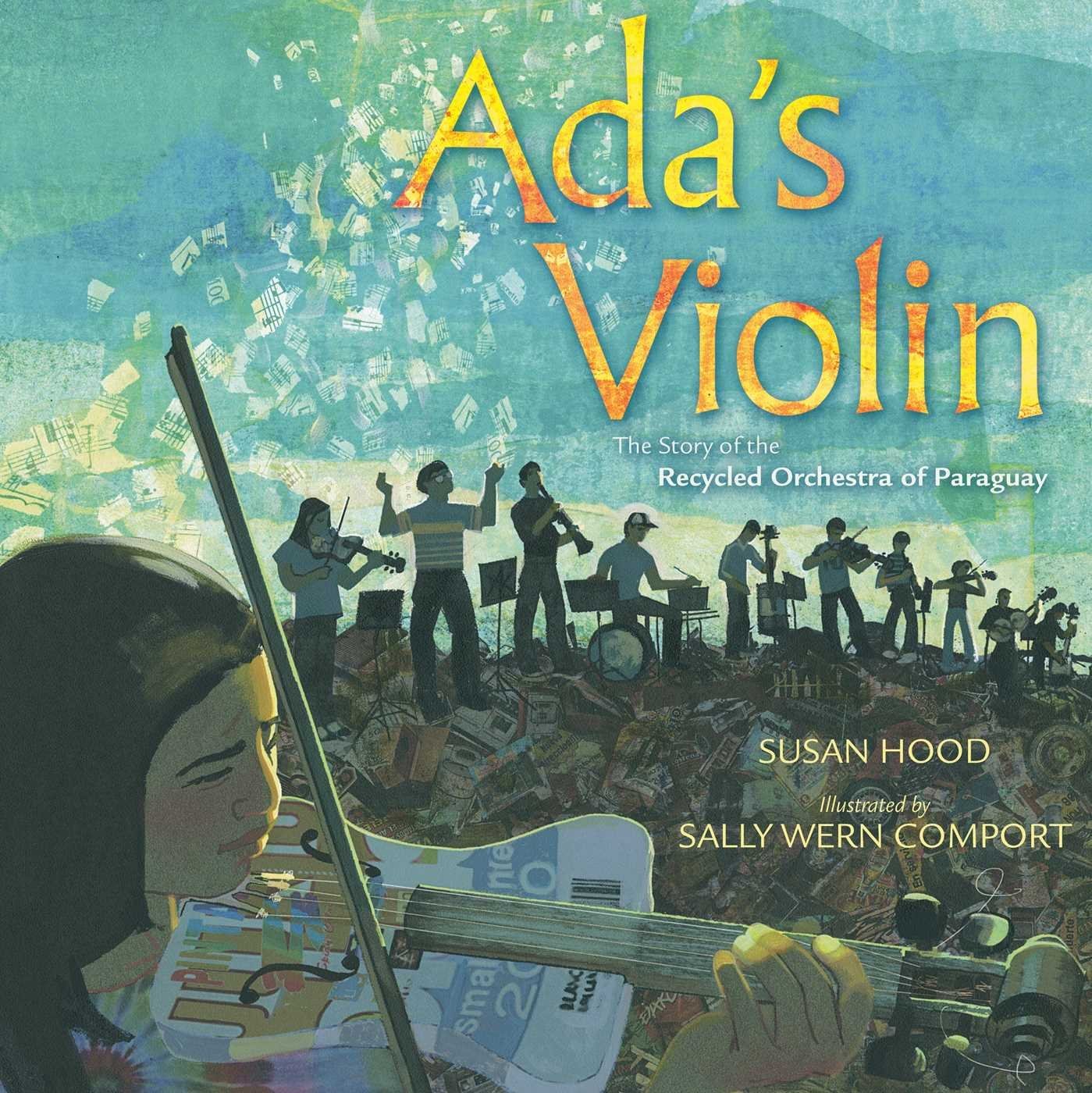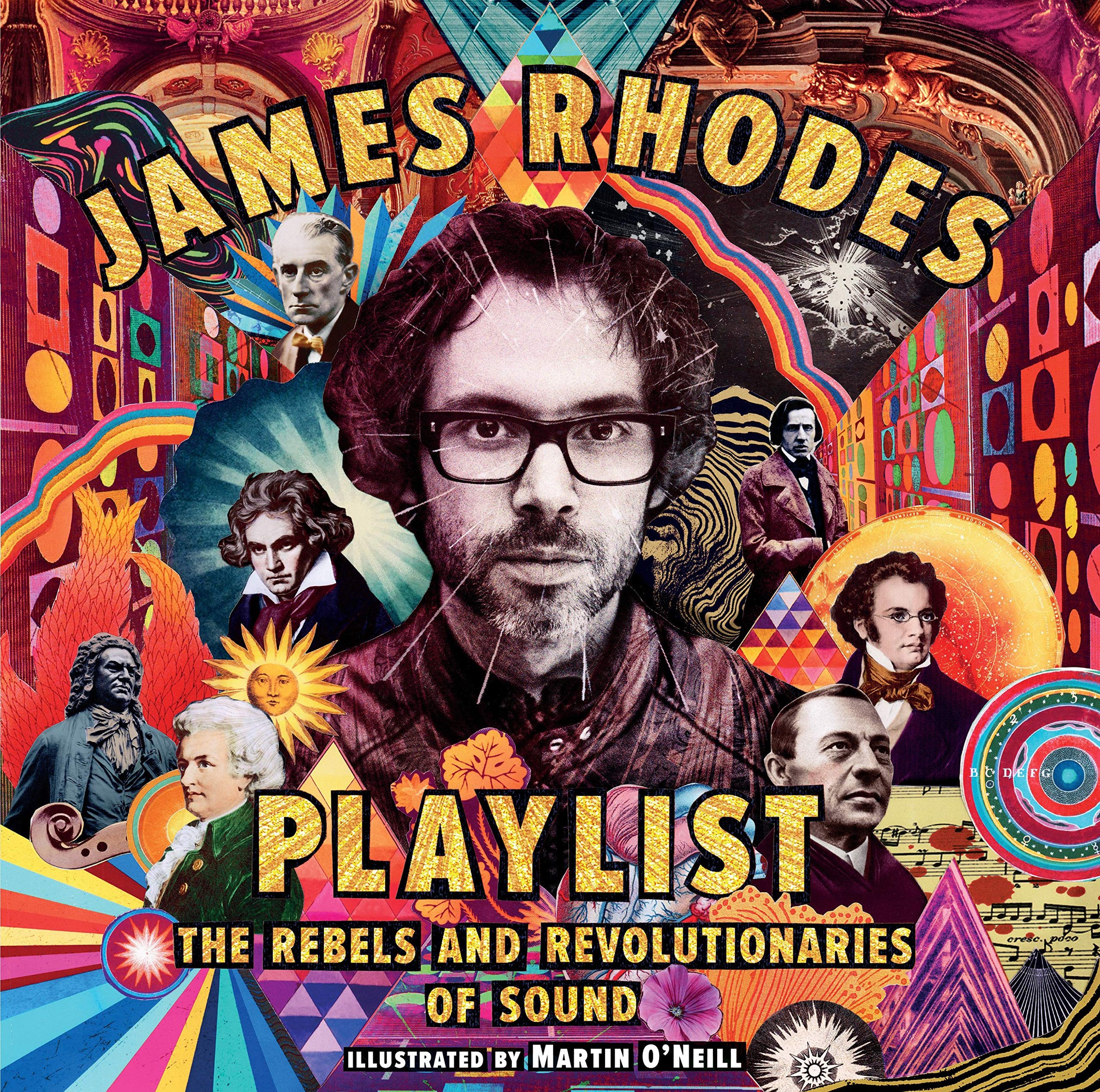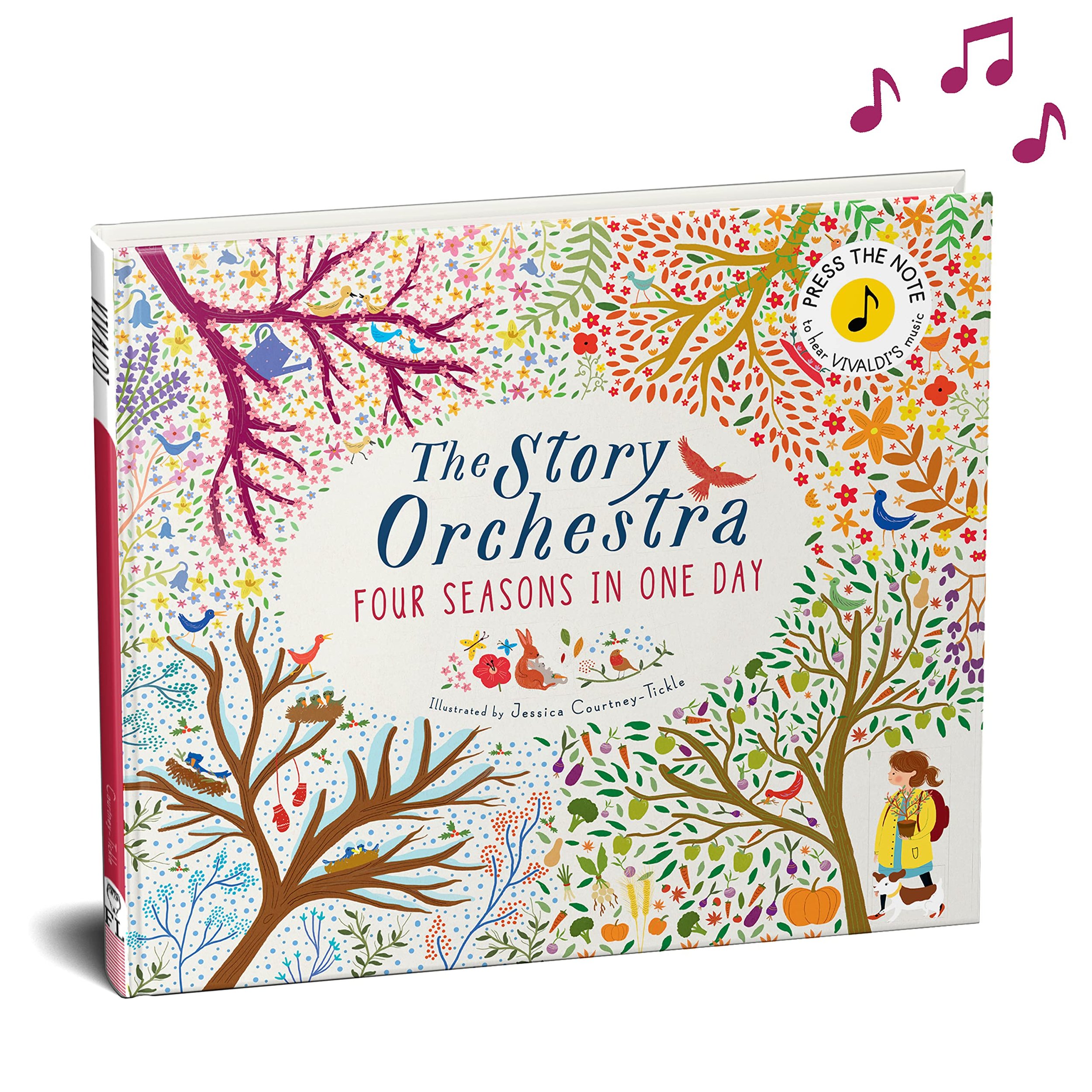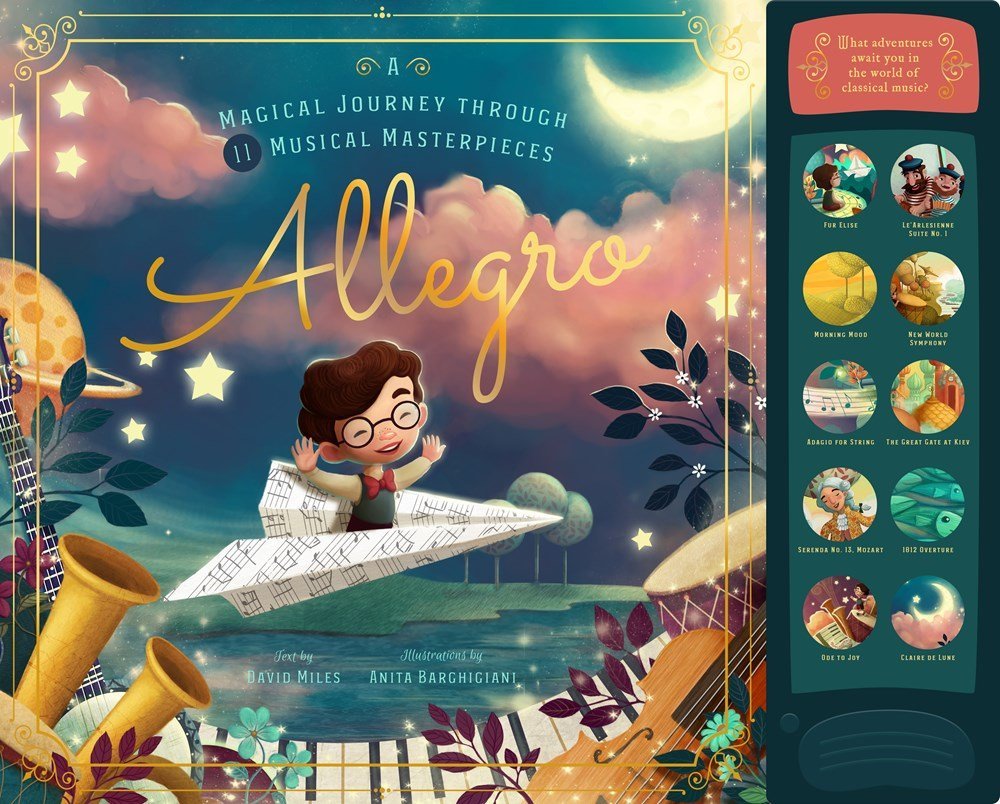Great books for budding musicians
Inspiring hard work and noble character through music
Both of my kids do Suzuki piano, an immersive music program involving a few classes per week, daily practice, and active and passive listening to music. In the program, parents attend the lessons, too, and learn to play and work alongside kids as home teachers or supporters.
It’s a good exercise in hard work and humility, and an experience we grow through—and, honestly, often suffer through—together. While it’s nice when they learn new pieces, my real hope is that this will be a character-building experience where they learn a bit about sacrifice, self-regulation, patience, and a growth mindset.
Here are some of our favorite picture books and chapter books related to music that reinforce this idea of music as a noble pursuit—something else beyond the notes.
Hana Hashimoto, Sixth Violin
by Chieri Uegaki and Qin Leng
An excellent book for anyone starting to learn an instrument (recommended ages 6-8). With three violin lessons under her belt, Hana signs up for the school talent show. Her brother teases her and tries to get her to back out, but she’s quietly determined. This is a positive story that celebrates creativity, fresh perspective and a sense of fun in music-making. It’s good for Suzuki beginners as it shows that everyone has something to perform.
Read this: To think about creativity and tenacity.
Read with: The Whatifs, a story that explores performance and stage fright (ages 4-8); Listen to My Trumpet, which features an enthusiastic Piggie playing her new instrument for a friend for the first time (ages 3-6).
A Mouse Called Wolf
by Dick King-Smith
This was a great aloud for my kids at 5 and 7. A mouse discovers and pursues his love of singing and finds a sense of purpose. He develops a lovely friendship with a human. Also interesting is Wolf’s relationship with his mother. She loved his voice but didn’t always appreciate or understand him fully; this nuanced depiction may be helpful to kids who feel different or misunderstood by their parents in their creative quests or otherwise.
Read this: For the courage to be yourself. Also learn about how we can use our strengths to help others and get out of tricky situations.
Read with: When the Bees Fly Home, a story about a misunderstood little boy whose family comes to understand him through his strengths (ages 6-8); Passing the Music Down, a beautiful picture book also exploring inter-generational relationships, this one a story between a young musician and his mentor, an old fiddler (ages 5-8); Federico the Mouse Violinist, a story of a passionate young mouse who sneaks into Stradivari’s workshop (ages 4-8).
The Whatif’s
by Emily Kilgore
A little girl is plagued by worst case scenario worries as she prepares for a piano recital. She makes a friend who understands her “whatifs” and challenges her to re-frame them in the positive—what if something good happens, instead of something bad? (Ages 4-8.)
Read this: To learn positive self-talk and self-regulation.
Read with: Catching Thoughts, a story that teaches kids to acknowledge and challenge unwanted thoughts (ages 4-8); Hello, Brain, a book about positive self-talk and self-regulation (ages 8-12).
Listen to My Trumpet
by Mo Willems
This is a sweet book for ages 3-6 that’s more about friendship than music. Piggie gets a trumpet and is so excited to play it for Gerald, who must juggle tact with integrity. The story is simple and funny, celebrates creativity, patience and kindness, all important when you’re learning something new or supporting a friend who may not get it “right” the first time.
Read this: To think about what it means to be kind and supportive. Kids who strongly value friendship will appreciate Gerald and his social intelligence.
Read with: How to Be a Friend, a social skills book exploring how we can be good friends (age 3-6); A Child’s Introduction to Jazz, a fun expansive look at jazz (ages 8-12); A Horn For Louis: Louis Armstrong—as a kid! is a book about a seven year old Louis Armstrong who gets his hands on his first horn through hard work and persistence (ages 7-10).
As Glenn As Can Be
by Sarah Ellis
Glenn Gould as a child—serious, self-aware and passionate about piano. Nancy Yo’s illustrations are gorgeous and cinematic. An excellent book to read with kids to think about the role of performance, individuality and motivation in music. Ages 3-6.
Read this: To think about integrity and feel confident about our quirks. Gould knows what he likes and what he dislikes and stays true to himself.
Read with: Strange Mr. Satie: Composer of the Absurd, a picture book biography of another musical genius and the singular dreamlike music he made; Carmen, which explores the famous opera through the perspective of a sensitive child (ages 7-10); Mozart Finds a Melody (ages 5-9); Becoming Bach, a beautiful and picturesque coming of age picture book of young Johann Sebastian (ages 4-8); also much to discover in the Getting to Know the World’s Greatest Composer series, although these books can read a bit dry (ages 6-10).
Watch with: Glenn Gould and his chair. And here’s another video of Gould talking more about how he hates performing for an audience.
by E. B. White
A beautifully written read aloud by E. B. White, the author of Charlotte’s Web. Louis is a trumpeter swan who was born without the ability to trumpet or communicate with his family. Sam is an introspective boy who meets Louis one day in the woods and, together, they work together to solve Louis’ problems and face fears. This is a classic that is also fast-moving, fun and gentle, fit for a read aloud for ages 6-10 or an independent read for third or fourth graders and up.
Read this: To overcome obstacles and foster a love of music.
Read with: The Little Book of Backyard Bird Songs is an awesome interactive board book featuring twelve birds and their songs (recommended ages 2-5, but beloved by both older kids and adults in our house); in Project Ultraswan, kids (ages 6-10) learn about the migration routes of trumpeter swans and how scientists protect them from extinction, and, in Waterbirds, kids (all ages) will view beautiful photographs of unusual waterbirds and learn about their habits, motivations and dangerous lives.
Because
by Mo Willems
A heartfelt story that showcases all the hard work and people behind a great show, from chandelier cleaner to composer. It celebrates community and teamwork, and the illustrations are delightful and charming. (Ages 3-7.)
Read this: To appreciate the collective spirit of putting on a show or concert. Think about teamwork and the importance of perseverance and practice.
Read with: The Philharmonic Gets Dressed, which follows the 105 members of the New York Philharmonic as they get dressed and prepare for a night of work playing in the orchestra, recommended for kids 4-8.
by Robert McCloskey
Lentil longs to make music but can’t sing or whistle. He picks up a harmonica and everything changes. Robert McCloskey’s stories are timeless with great prose. (He wrote Make Way for Ducklings and Blueberries for Sal, among others.) This is a great story for kids who may feel competitive, or behind, those around them. (Ages 3-7.)
Read this: To help kids realize that they are exactly what the world needs and are good enough.
Read with: Zeke Pippin features a kid who gets good at the harmonica and discovers it puts those around him to sleep (ages 4-8); The Trumpet of the Swan (ages 6-10).
The Piano Recital
by Akiko Miyakoshi
A dreamlike story of a little girl preparing for her piano recital. Waiting backstage, she meets a little mouse who is also about to perform and is swept into a concert of mice and magic. Lovely art and adventure of fantasy and imagination.
Read this: To explore the power of imagination. The little girl uses fantasy and imagination to manage difficult emotions.
Read with: Dancing Hands, the story of a child prodigy who played for Abraham Lincoln; Jack’s Worry, a story of a little boy struggling with worry before his first trumpet concert.
The Bear and the Piano
by David Litchfield
A sweet story of following one’s dreams, and the value of friendship and home. In the story, a bear finds a piano in the forest. Day after day, he practices playing and eventually learns to make beautiful music for his friends, and leaves home to play in the city. He misses home and returns to find his old piano and friends are still for them, despite all that’s changed. (Ages 4-7.)
Read this: To think about the importance of home and where we come from, and how it matters no matter how far we roam.
Read with: The Bear, the Piano, the Dog, and the Fiddle and The Bear, the Piano and Little Bear's Concert, the follow-up stories to this one; When Paul met Artie: The Story of Simon & Garfunkel, another friendship-musician story illustrated by David Litchfield, this one for older kids (ages 9-12).
Reading books about music, particularly fiction books, can help bring back a sense of fun and balance to the music environment. It’s nice for kids to have a model in their mind of other kids going through similar struggles and a deeper connection to music beyond drills and lessons.
Below are some more popular picture books about music—some we’ve read and really liked, and others our Suzuki friends have liked. I’d love to learn more about good ones your kids have liked. If you’ve stumbled on this blog and anything comes to mind, please share a link!
-Lauren








































